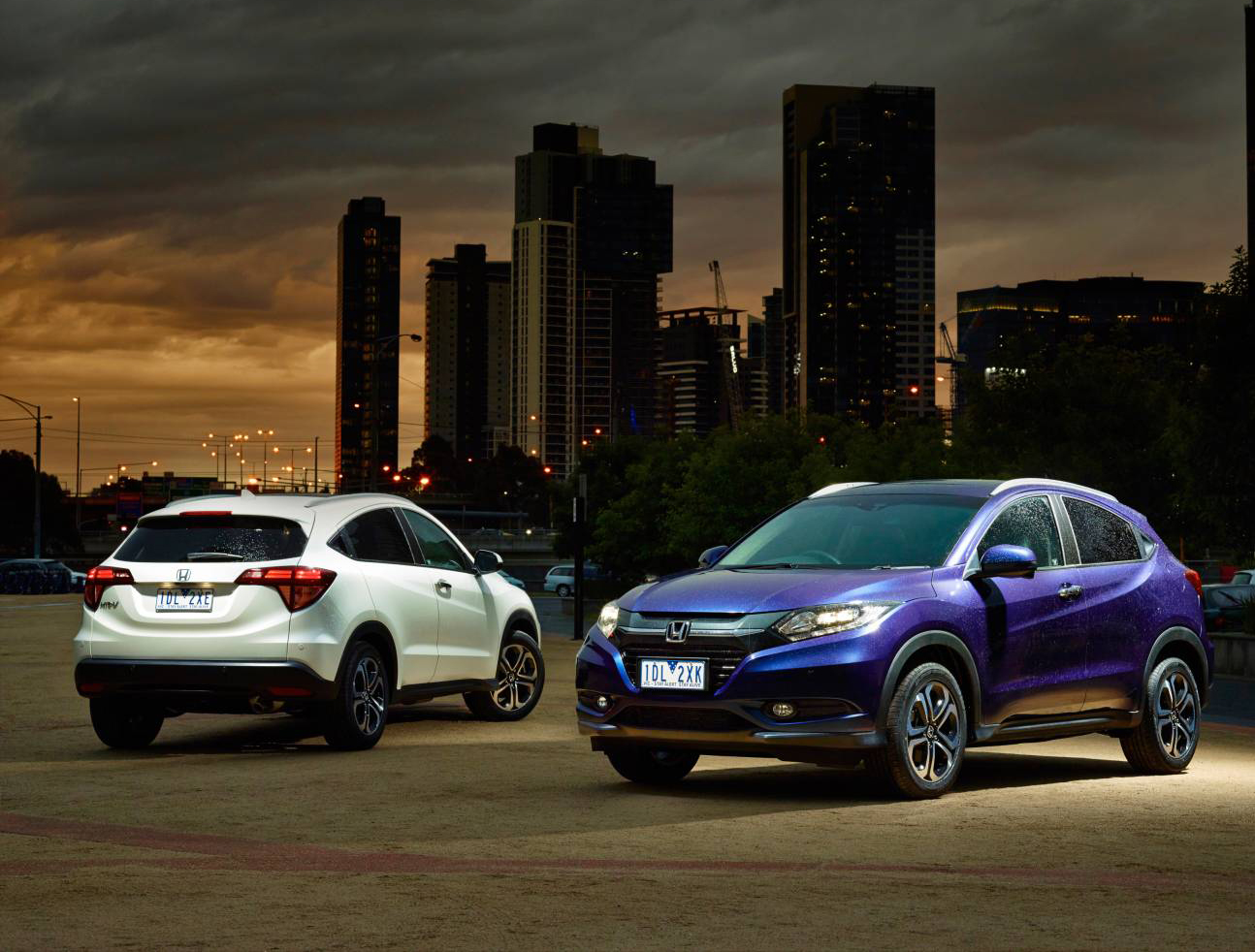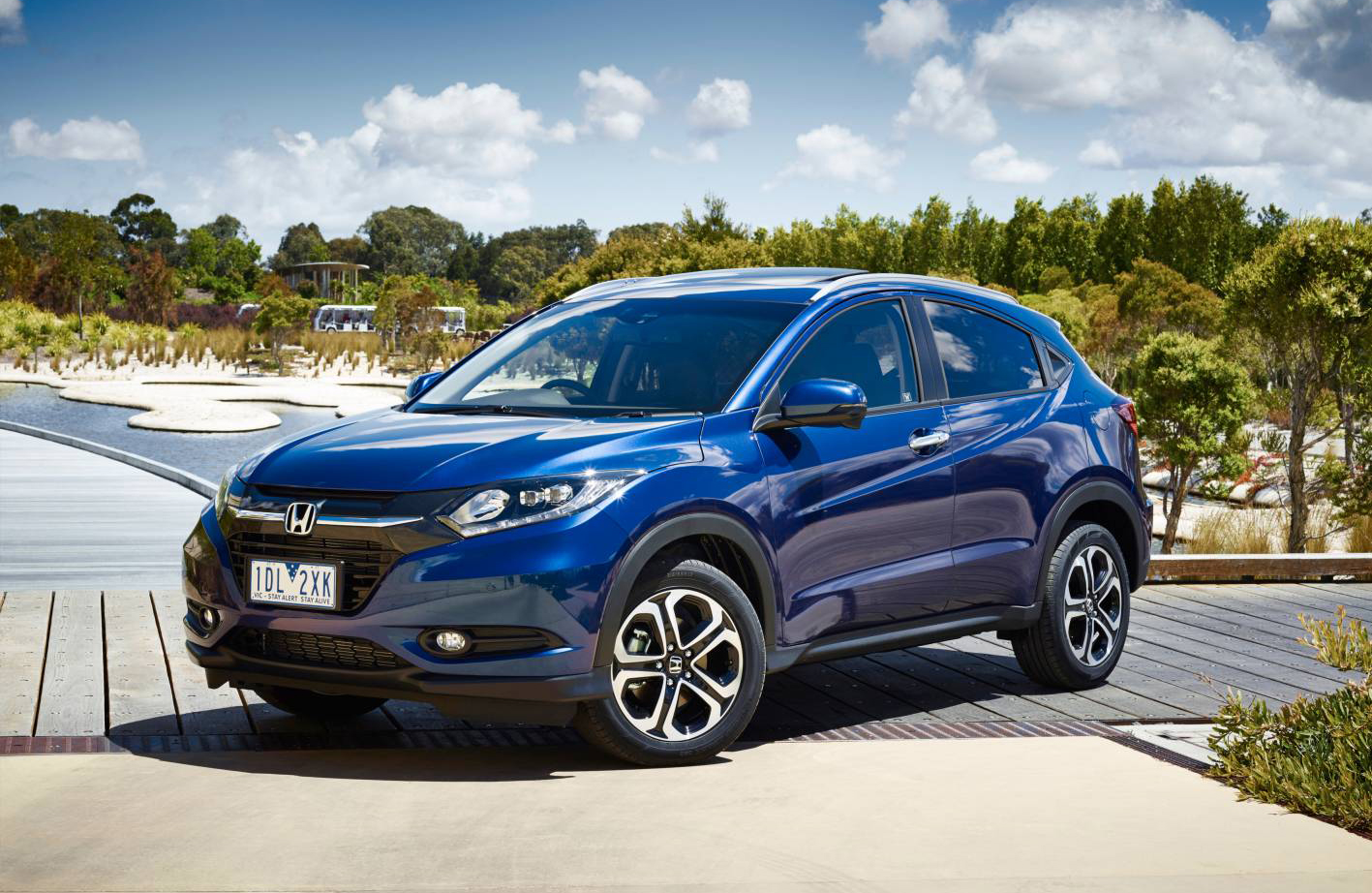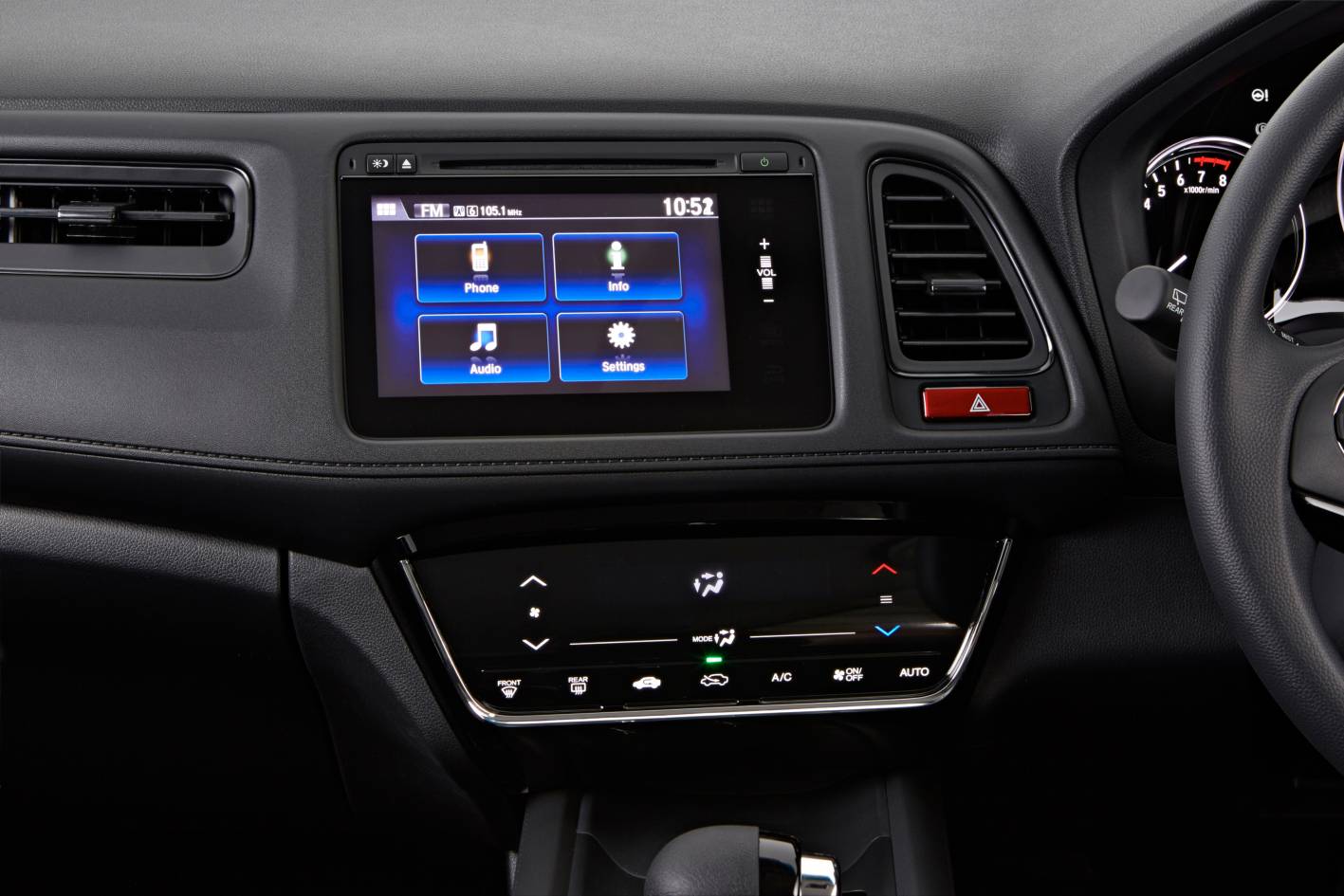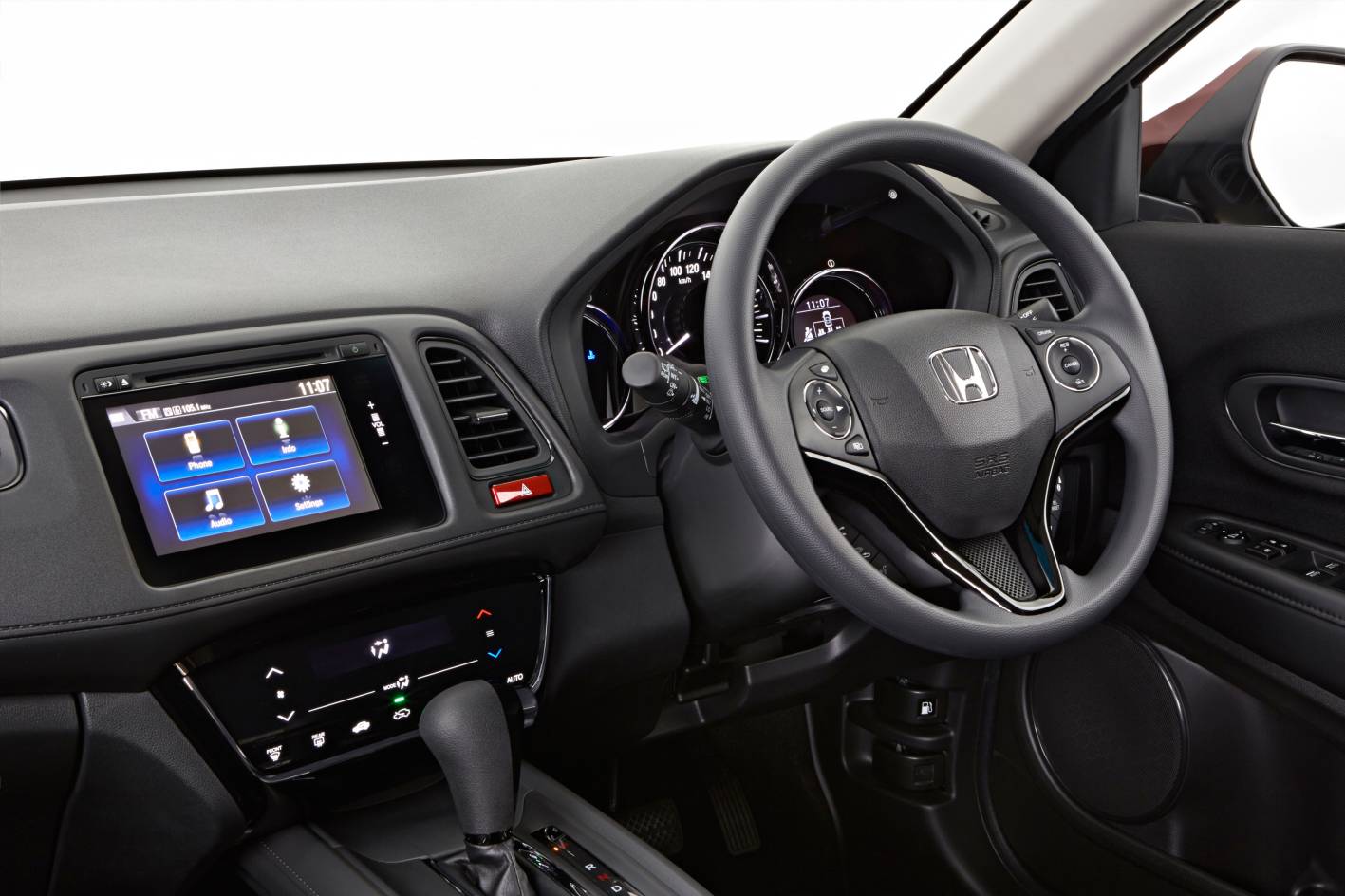After an eight-year hiatus, Honda reintroduced the HR-V to Australia this year to give it a stake in the ever-growing small SUV market. You wonder what took it so long.
The company had put its weight behind its versatile little Jazz in recent times, so it made sense to draw on its popularity with a crossover vehicle.
Its main rival here is the Nissan Qashqai and, like its competitor, it’s nice to look at and drive.
Inside, there’s that Honda quality which gives it an upmarket feel. The dashboard is similar to the Jazz with clean lines and the 7-inch swipe-able touchscreen that controls and displays multimedia, Bluetooth connections, phone and performance information.
Voice control is available via Siri, if you have an iPhone. You can also sync your iPhone to use Apple Maps, though this feature isn’t available for Android phones. The only alternative is to use an app that uses a lot of mobile data.
The touch screen also shows the reverse camera display and features “LaneWatch”, which provides a rear view down the passenger side when you indicate to turn or change lanes to the left.
I found this a little distracting at first but eventually found it no different to looking at the side mirror, which Honda recommends you continue to check.
This, like the reverse camera, makes up for the poor rearward visibility.
As with most other Honda models, the climate control panel is also touchscreen- controlled, which can be a little tricky while you’re driving.
As you’d expect from Honda the interior design makes good use of space. There’s plenty of elbow-room and the seats are comfortable with nice back support.
Legroom at the back is good, too, although the curved roofline means headspace is pretty tight for anyone on the tallish side.
The HR-V features Honda’s multi-adjustable Magic Seats in the rear, which give it an edge over most of its rivals in terms of capacity. It’s just a quick adjustment to turn from a small wagon into a mini-van van with 1032 litres of cargo space.
The HR-V steers nicely and the continuously variable automatic transmission generally slips through gears seamlessly. It’s only when you put your foot down that the 1.8-litre petrol engine, which comes from a Honda Civic, screams
in protest as the transmission tries to catch up. One way around this is to go down a
gear in semi-manual mode via the paddle shifters.
Fuel economy is excellent, with a published combined rate or 6.9 litres per 100 kilometres, which would be the case if you keep rapid acceleration and downshifting to a minimum.
Prices for the HR-V start at $28,343 for the VT-i.
This may seem pricey for its class, but few of its competitors’ base models would come with the same features and interior quality as standard.
www.honda.com.au/cars/models/hr-v












